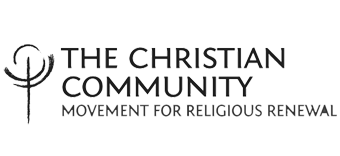Latest News
Kitchen Chat and more…
Kitchen Chat and more…
On September 20, 1913, on the occasion of the laying of the foundation stone for the first Goetheanum, Rudolf Steiner spoke of a fifth gospel, and gave “as a first revelation of the fifth gospel . . . the primeval macrocosmic world-prayer which is connected with the Moon and Jupiter, even as the four gospels are connected with the Earth.” The prayer sounds thus:
AUM, amen!
The evils prevail,
Witness of unleashing of egohood,
Incurred through others, selfhood-guilt,
Experience it in daily bread
In which heaven’s will does not prevail
Since man departed from your kingdom
And forgot your names, You fathers in the heavens.
In lectures later that year Rudolf Steiner spoke further about this prayer. On October 5 and 6 in Oslo he told how these words were experienced by Jesus of Nazareth in an event some years before the baptism, spoken by a voice out of the spiritual world. Steiner told further how then later the Christ Jesus transformed these words into what we know as the Lord’s Prayer.
In what way can we imagine the words of this “macrocosmic Our Father” as a prayer? By far the greatest number of prayers to be found in the Bible are in the psalms of David. There are prayers of supplication, prayers of thanks, and also prayers of praise. Something of each of these is contained in the Cosmic Our Father, but in mirror form. The words do imply a supplication that is not fully expressed. Rather than thanks, we can hear the statement of a condition where all hope is lost. And praise is replaced by a sense of loss.
Whose voice can we imagine speaking the words? The situation that called them forth was described by Rudolf Steiner as arising from Jesus’s experience of compassion for the God-forsaken people in the neighborhood of Judea. He characterized the voice as “the transformed voice of the Bath-Kol”, that voice which was the last remnant of what had been the spiritual inspiration of the Hebrew prophets. But what we can understand further of the nature of the voice derives from the words themselves.
In his lectures on the structure of the Lord’s Prayer Rudolf Steiner spoke above all about the nature of petitional prayers, and pointed out that the archetypal prayer consist of Christ’s words “not my will but thy will be done.” As these were introductory lectures, he recapitulated the description of the human being from the point of view of Anthroposophy: the physical body, the etheric or life body, the astral or soul body, and the ego; and the higher aspects of the human being which result from his work on the lower members: the spirit-self as transformed astral body, the life-spirit as transformed etheric body, and the spirit-man as transformed physical body. He then showed how the sentences of the Lord’s Prayer each express the needs of one member of the human being:
We may also find insight into another aspect of the human being through the Lord’s Prayer, and this is the mystery of the human form. Let us observe how the archetype of the human form comes to expression through the Lord’s Prayer.
We begin with the words “Our father, who art in the heavens”, and consider what form arises from these words. If we focus on that our father is in the heavens, we can imagine to begin with the sky arching over us. To this picture we can then add the sun by day, or imagine the stars shining at night. The overall shape is that of a dome filled with light. And this is an image which corresponds to the shape of the human head, which is also a dome. Rudolf Steiner has again and again pointed out how the head is formed as an image of the heavens. And we begin our embryological development as a sphere—we are “all head”; we are a copy of the universe. In this way we can see the human form begin to arise when we contemplate the opening of the Lord’s Prayer.
Now we continue with the words, “hallowed be thy name.” What, as Shakespeare asked, is in a name? I know that for me the first image that arises when I hear the name of a friend is the friend’s face. I do not think of the friend’s head—that is part of the friend’s universal humanity. Through the form of the face I recognize my friend as an individual, as unlike any other. With the words “hallowed be thy name” we contemplate the countenance of the universal, archetypal human being, whose image we carry in ourselves. To look upon this image has not always been possible. When Moses asked to look on God’s countenance, he was told, “No man can look upon my countenance and live.” We can see this aspect of our father represented in the sun, which will make us blind if we look at it too long.
With the words, “Thy kingdom come”, we approach the realm of the human rhythmic system, and to some extent, the metabolic system. Here is a kingdom with its provinces and its governing laws. The laws are ones that we fortunately do not have to administer consciously; when our consciousness does reach into this kingdom, it is usually because something is not quite right in it. Let us imagine how the harmony of our Father’s kingdom is reflected in the orderly rhythmic movements of the planets. In a similar way our body’s organs work in a harmonious relationship with each other, which can largely be expressed through laws of rhythm. As long as we live according to harmonious rhythms of day, week, month, and year, we can expect to live in good health. Illness is often the result of living “out of rhythm.”
Address given at Delegates Conference*
Chicago, Nov. 4, 2005
There are three characteristics of angels that are frequently pictured in artistic renderings. The first characteristic is that angels have wings. We think of the earthly creatures that have wings, the birds: they inhabit a sphere above the earth, the air regions. They live in a world of light and uplift, not limited by earthly gravity.
Picturing angels as having wings is an artistic way of saying that angels too are not bound to the earthly. They are limitless; they live in expanses. They live with the world of eternity at their backs.
In Ezekiel 10:12 there is a mighty description of great angelic beings covered in eyes. Therefore angels’ wings are pictured as having eyes on them. Eyes convey consciousness. They take things in, into a consciousness that is broader, brighter, clearer, purer, and more transparent than human consciousness. Eyes also shine forth; the gaze of an angel radiates love and recognition.
A third artistic motif used in picturing angels is as a musician. A good piece of music opens up heaven for us. In music, spiritual creative forces permeate space, harmonizing souls, ensouling and spiritualizing community; tuning souls to one another.
These three motifs, wings, eyes and musician, can help us understand the relationship between the human and the angelic realms.
There are nine ranks, or choirs of angel above the human realm. The third group of three, the angels, the archangels and the Primal Powers or Archai, are the three choirs we want to look at today.
Angels
The lowest of these choirs, the angels, are the ones closest to the human realm. Angels are intimately connected with individual human beings. We each have an angel assigned to us, a guardian angel, who accompanies us along our paths through lifetimes. Their ‘wings’ give them the overview that it is not possible for us to have. The angel’s ‘eyes’, angelic consciousness, sees, takes in, and remembers everything for us. The angel can remember what we have been and who we want to be. Angelic consciousness is, like that of a chess player, able to anticipate the results of our moves. Our angel is the carrier of our higher self. Angels listen to our thoughts. To become aware of one’s angel is to feel oneself to be watched, seen and recognized. Our angel’s eyes radiate love, recognition.
The Angel in You
Rose Auslander
The angel in you
Rejoices over
Your light
Weeps over your darkness
Out of his wings whisper
Words of love
Poems, tender affection.
He watches over
Your path
Direct your step
Angelwards.

